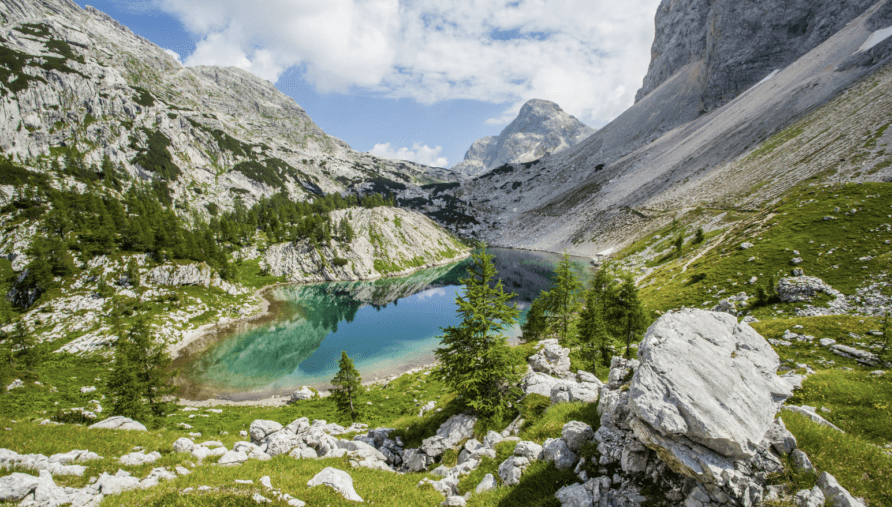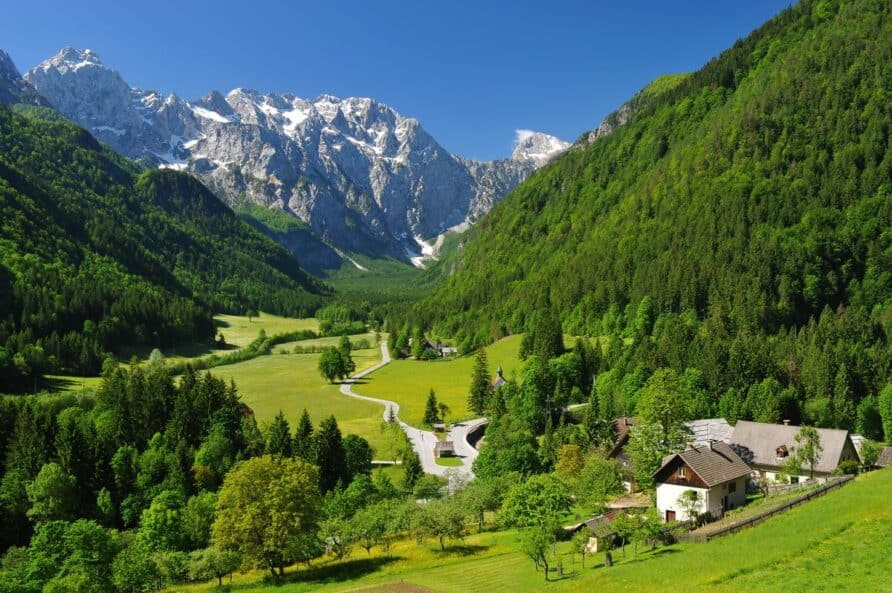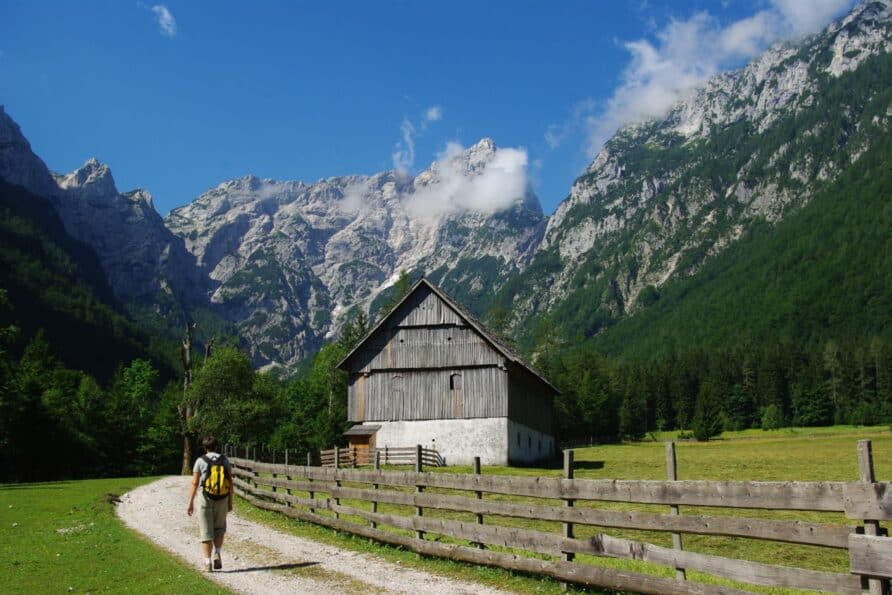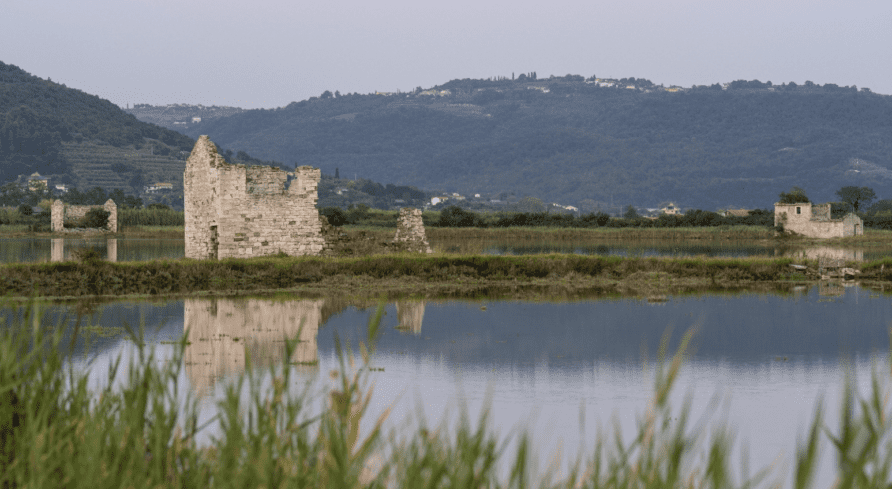Discover Slovenia’s Nature Parks: A Haven of Natural Beauty
Slovenia is a country renowned for its pristine landscapes and abundant natural treasures, and its Nature Parks stand as a testament to this breathtaking beauty. These protected areas offer visitors a chance to immerse themselves in the unspoiled wonders of Slovenian nature.
From the majestic Julian Alps to the idyllic coastal regions, Slovenia’s Nature Parks showcase a diverse range of ecosystems and habitats. Each park is a sanctuary for a rich variety of flora and fauna, creating havens for rare and endangered species.
Traverse the enchanting Triglav National Park, Slovenia’s only national park, where snow-capped peaks, emerald lakes, and lush valleys await. Discover the iconic Lake Bled, nestled amidst the Julian Alps, or explore the stunning Soča River, known for its crystal-clear turquoise waters.
Uncover the secrets of Škocjan Caves Regional Park, a UNESCO World Heritage site that boasts a mesmerizing underground world of stalactites and stalagmites. Traverse the magical forests and winding trails of Kočevje Region, where ancient trees and diverse wildlife thrive.
For those seeking coastal charm, the Strunjan Landscape Park offers captivating cliffside vistas, while the Sečovlje Salina Nature Park invites you to witness the age-old tradition of salt production in harmonious coexistence with nature.
Slovenia’s Nature Parks are not only havens of natural beauty but also playgrounds for outdoor enthusiasts. Embark on thrilling hikes, cycle through picturesque landscapes, or indulge in adrenaline-pumping water sports. The parks provide endless opportunities for exploration and adventure.
Reconnect with nature, breathe in the crisp alpine air, and be captivated by the awe-inspiring vistas that surround you. Whether you’re a nature lover, an adventure seeker, or simply seeking peace and rejuvenation, Slovenia’s Nature Parks offer an unforgettable experience that will leave you in awe of this small yet astonishingly diverse country.
Plan your visit to Slovenia’s Nature Parks and embark on a journey through some of Europe’s most stunning natural landscapes. Let the beauty of these protected areas ignite your sense of wonder and appreciation for the remarkable natural heritage of Slovenia.
- Triglav national park
- Logarska Dolina
- Robanov Kot
- Golte
- Škocjan Caves Regional Park
- Kočevje Region
- Strunjan Landscape Park
- Sečovlje Salina Nature Park
- Other nature parks
Triglav National Park

In the Julian Alps lies Slovenia’s highest mountain: Triglav. Its name means the three-headed by the formation of the mountain, and it is some 2,864 metres high. The park surrounding it is named after the mountain: Triglav national park (Triglavski narodni park).
The park is one of Slovenia’s most famous parks. The park is 838 km2, which is 4% of Slovenia’s surface area. The north of the park is mountainous, but as you go further south, it is sloping, with the lowest point at 180 metres. The difference is almost 2,700 metres!
You can experience the real Alpine feeling well in this park with its mountains, green valleys, diversity of flora and fauna and waters. One of Slovenia’s most famous legends takes place in Triglav national park: Goldenhorn or Zlatorog in Slovenian. The kingdom of Goldenhorn is home to magnificent treasures, at least according to legend
The park includes many wonders such as Bohinj, Soča valley, Kranjska Gora and Bled.
In this park, you can do a fun hike with children: the Goldenhorn Fairyland hike. The walk is named after the aforementioned legend. It is a free walk, but you can take a guided tour, or buy a booklet with a map. This walk aims to promote experiential learning. The central theme of the walk is legends, which are told on signs at various places. Should you want to read them back later, you can do so, as they are in the booklet. In addition, there are assignments that can be carried out. These assignments are very fun and challenging for the children. How long the walk takes depends on how much time you spend at the playgrounds. You can take 1 hour, but also easily half a day.
Logarska Dolina

Logarska Dolina, often referred to as Logar Valley, is a hidden gem tucked away in the Kamnik-Savinja Alps of Slovenia. Renowned for its unspoiled natural beauty, this pristine valley offers a captivating retreat for nature lovers and outdoor enthusiasts.
As you enter Logarska Dolina, you are immediately greeted by the breathtaking scenery that surrounds you. Towering peaks, including Mount Ojstrica and Mount Planjava, frame the valley, creating a dramatic backdrop that seems straight out of a postcard. The valley itself is characterized by lush green meadows, dense forests, and crystal-clear streams that meander through the landscape.
The Logar Stream flows gracefully through the valley, adding to the tranquility and charm of the area. The sound of its gentle flow and the scent of fresh mountain air create a serene ambiance that instantly invites relaxation and exploration. Along the stream, wooden footbridges allow visitors to traverse the valley while taking in the mesmerizing views.
Hiking and outdoor activities are at the heart of the Logarska Dolina experience. The valley offers a network of well-marked trails that cater to varying levels of difficulty and length, ensuring that there is something for everyone. Whether you prefer a leisurely stroll along the valley floor or a challenging ascent to one of the surrounding peaks, you’ll be rewarded with awe-inspiring vistas at every turn.
One of the highlights of Logarska Dolina is the Rinka Waterfall, a majestic cascade that plunges from a height of over 90 meters. The waterfall’s power and beauty are mesmerizing, and visitors can reach it via a well-maintained trail that winds its way through the forest. The viewing platform near the waterfall provides an ideal vantage point to marvel at its grandeur and capture memorable photographs.
Aside from hiking, Logarska Dolina offers various other activities to immerse oneself in the natural surroundings. Cycling enthusiasts can explore the valley and its surroundings on bike paths that traverse the area. There are also opportunities for horseback riding, fly fishing, and even paragliding for those seeking a more adventurous experience.
The hospitality in Logarska Dolina is characterized by the warm and genuine nature of the local people. Traditional farmhouses dot the landscape, and some offer accommodation options for visitors to experience the local way of life. The valley is known for its organic farms, where you can indulge in farm-fresh produce, homemade dairy products, and traditional Slovenian cuisine.
Logarska Dolina is not just a natural paradise but also a place of cultural significance. The Solčava Panoramic Road, a scenic route that winds through the valley, offers stunning viewpoints and insights into the local heritage. Traditional wooden hayracks, known as “kozolci,” dot the landscape, showcasing the area’s rich agricultural traditions.
Whether you are seeking a peaceful retreat in nature, an active outdoor adventure, or a glimpse into Slovenian rural life, Logarska Dolina provides an unforgettable experience. Its unspoiled beauty, tranquil atmosphere, and abundance of outdoor activities make it a must-visit destination for nature enthusiasts and those seeking respite from the bustling world.
Robanov Kot

Welcome to Robanov Kot: A Picturesque Alpine Valley in Slovenia
Robanov Kot, nestled amidst the breathtaking Slovenian Alps, is a hidden gem that invites you to discover its untouched natural beauty and charming rural traditions. Located in the heart of the Kamnik-Savinja Alps, this enchanting alpine valley offers a serene retreat from the hustle and bustle of modern life.
As you enter Robanov Kot, you’ll be captivated by its idyllic landscapes characterized by rolling hills, lush meadows, and towering peaks. The valley is renowned for its untouched wilderness, where crystal-clear streams meander through forests of spruce and fir, and alpine flora adorns the slopes. Nature enthusiasts will find themselves immersed in a world of wonder, with abundant opportunities for hiking, mountaineering, and wildlife spotting.
One of the highlights of Robanov Kot is its rich cultural heritage. The valley is famous for preserving its traditional rural way of life, offering visitors a glimpse into the past. The iconic Robanov Kot Farm, a beautifully preserved wooden farmstead dating back to the 16th century, stands as a testament to the region’s history and agricultural traditions. Step into this living museum, and you’ll be transported to a bygone era, experiencing the authentic ambiance of a traditional Slovenian farm.
Robanov Kot also serves as a gateway to outdoor adventures. Immerse yourself in the pristine beauty of the surrounding mountains through exhilarating hikes, where you’ll be rewarded with panoramic vistas of snow-capped peaks, verdant valleys, and cascading waterfalls. The valley is a hiker’s paradise, with a network of well-marked trails catering to different skill levels, from leisurely strolls to challenging alpine treks.
For those seeking tranquility, Robanov Kot offers a peaceful respite. Relax by the tranquil streams, indulge in a picnic amidst wildflowers, or simply soak up the serene ambiance while enjoying the majestic views. The valley’s clean and invigorating air, coupled with its picturesque landscapes, creates an ideal environment for rejuvenation and reconnecting with nature.
Robanov Kot is not only a place of natural beauty but also a thriving hub of traditional culinary delights. Experience the flavors of the region through delicious local dishes prepared with locally sourced ingredients. Don’t miss the opportunity to taste traditional Slovenian dishes, such as hearty stews, homemade bread, and delectable dairy products, all made with love and passed down through generations.
Whether you’re an outdoor enthusiast, a culture aficionado, or simply seeking a peaceful escape, Robanov Kot promises an unforgettable experience. Lose yourself in the untouched wilderness, immerse yourself in the rich local traditions, and embrace the tranquil spirit of this captivating alpine valley. Robanov Kot is a hidden treasure waiting to be explored, offering an authentic slice of Slovenian paradise.
Plan your visit to Robanov Kot today and embark on an unforgettable journey through the untouched beauty of the Slovenian Alps.
Sečovlje Salina Nature Park

In Slovenia, salt is extracted in salt fields in the traditional way. The Sečovlje Salina nature park shows the history of salt extraction and how it is done. In addition, the park is filled with unique biodiversity. This is because the salt pans is a special wetland where plant and animal species have adapted to the extreme living conditions of salt water. In the park, you can enjoy this special nature.
The park has two entrances. The first is in Lera, and the second at Fontanigge. It is important to take your passport with you when you want to go to the second entrance, as it lies between Slovenia and Croatia. There is wellness to be found, but to go here you need to have booked in advance. Unfortunately, visiting the park is not free. For current prices, check the park’s website.
If you want to go through the second entrance to the salt museum, you can go by bike. We do recommend this as it is about 2.5 km. It is possible to cycle towards the sea.
We recommend visiting the park at the end of the day, so you will be less affected by the sun and get a nice view with the setting sun. A visit to this park can be well combined with a visit to Piran.
Other parks
- Rakov Škocjan
- Kozjanski park
- Strunjan national park
- Zelenci nature reserve
